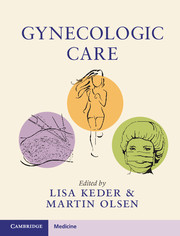Book contents
38 - Patient Safety in Gynecologic Care
from Section 6 - General Considerations
Published online by Cambridge University Press: 01 February 2018
Summary
Introduction
Reduction of medical error and subsequent patient harm is a necessary component of gynecologic care. Although a desire to minimize error and maximize patient outcomes is implicit in the obligation to “do no harm,” concerted efforts to measure safety and actively improve it are relatively new phenomena. Reduction of error should be conceived as an ongoing process, rather than as incident-by-incident closed events, to optimize institutional patient safety.
Scope of the Problem
The Harvard Medical Practice Study published in the New England Journal of Medicine in 1991 reported that 3.7 percent of hospitalized patients suffered an adverse event, and 14 percent of these were fatal. More than two-thirds of these adverse events were judged to be the result of preventable errors. With this introduction to the scope of the problem, the field of medicine embarked upon a journey of self-reflection and action designed to accurately measure patient safety, identify the role of various contributors to the problem, and develop tools to minimize error and mitigate the impact of errors that do occur.
In 1996, many stakeholders, including the American Medical Association and the Joint Commission for the Accreditation of Healthcare Organizations (now the Joint Commission), met at the first multidisciplinary conference to address medical errors. During this conference, the AMA announced the formation of the National Patient Safety Foundation, and the Joint Commission announced a change in reporting of errors to embrace a nonpunitive approach designed to encourage disclosure of error. The publication of To Err Is Human four years later by the Institute of Medicine emphasized the need for evidence-based, practical techniques to reduce medical harm and promote patient safety. The problem was established, goals were set, and the modern patient safety movement was off and running.
Culture of Safety
In order to address medical error, providers and administrators must gain an understanding of error theory within the context of healthcare. There are four factors that contribute to medical error and may lead to patient harm: (1) human fallibility; (2) complexity; (3) system deficiencies; and (4) vulnerability of defensive barriers. Error can be either active (e.g., commission or omission of an act by a provider) or passive (e.g. the product of systems barriers that contribute to unsafe practices), and it often represents a combination thereof.
- Type
- Chapter
- Information
- Gynecologic Care , pp. 371 - 380Publisher: Cambridge University PressPrint publication year: 2018



